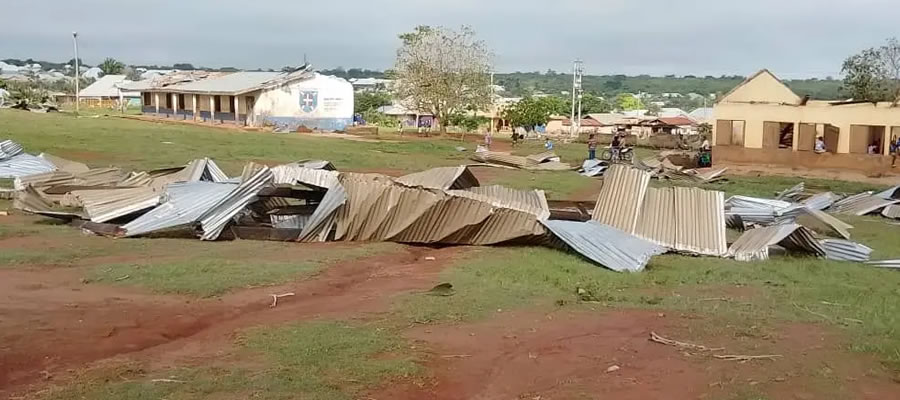

Good Governance and Civic Responsibility
Central Administration
The Wenchi District Assembly was established in 1988. The Assembly is the highest administrative and political authority in the District with the mandate to initiate development, and coordinate all development efforts aimed at sustainable development at the local level.
The Central Administration of the office of the District Assembly is broadly made up of 3 departments namely:General Administration
- Finance
- Planning and Budgeting Unit
To facilitate this, the local government Act 462 makes provision for the establishment of 11 Decentralised Departments and other administrative sub-structures as the Urban/Town/Area Councils and the Unit Committees.
The Wenchi District Assembly is currently composed of 30 Assembly Persons, one-third of who are appointed by the ruling government. There is one (1) MP who is an Ex-Officio member. This body is empowered to make and enforce by-laws. It exercises deliberative, legislative and executive functions in the District. The Assembly is chaired by a Presiding Member elected among members.
The Executive Committee of the Assembly is chaired by the District Chief Executive and discharges the Assembly Executive powers. The Central Administration, which is headed by the District Coordinating Director, also exists to assist in the general administration of the District.
A number of Sub-committees are established to function as the operating arms of the Executive Committee and assist in the implementation of specific activities of the Assembly. The sub-committees currently existing in the District Assembly are:
- Development Planning
- Social Services
- Works
- Justice and Security
- Finance and Administration
- Environmental Protection
- Agricultural
Decentralized Departments
At the District level, all the decentralized departments are represented, rendering their specialized services to the Assembly. These departments serve as the technical advisors to the sub-committees. Further, they respond to any invitation referred to them by the District Chief Executive to perform or provide a service to the Executive Committee.
The following departments and Agencies are currently represented in the district
- Directorate of Agric
- Ghana Health services
- Ghana Education Services
- Social Welfare & Employment
- Community Development
- Town and country Planning
- Finance
- NBSSI
- NCCE
- NADMO
- Electoral Commission
- Specialised Units of the Central Government
a. Births and Deaths Registry
b. Information Services
c. Statistical Service
Area Councils
The District has 4 Area Councils and 1 Urban Council. Their main functions include revenue mobilisation, implementation of policies at the local level and community mobilisation for popular participation in decision-making. In performing these functions, they act as the extended arm of the central administration of the Assembly.
The Councils receive support from the Assembly in terms of office accommodation and furniture, stationery and the provision and maintenance of the core staff.
Among the achievements of the Councils are;
- Public education on bush fires
- Establishment of District Data Base System
- Registration of birth and death
- Enforcement of polices on sanitation, town plans etc.
The problems facing the Area Councils include:
- Office accommodation
- Lack of core personnel for all the councils, especially revenue collectors
- Remuneration of staff
- Lack of finance to implement local projects
Unit Committees
The role of the Unit Committees is clearly spelt out in the new local government system. They generally perform roles similar to that of the Area Councils at the Community levels. Key ones among the roles are to mobilise the community members for popular decision-making, identification of development needs and organising for communal labour.
Decisions of the Unit Committees reach the Assembly through the Assembly members in their respective areas. Some of the problems the Unit Committees are facing are:
- Lack of recognition and respect
- Lack of incentive to the members
- Lack of commitment on the part of some members
- Irregular meetings
- Decisions taken at meetings are not implemented
- Lack of logistics
The Unit Committees and the Area Councils provide useful administrative services to the District Assembly, as they serve as a link between the Assembly and the Communities. If they are properly resourced, the rate of development will be faster.
Finance: Income and Expenditure Patterns
Revenue and expenditure patterns for the period 2001 – 2005 as presented in Tables 1.25 and 1.26 give a reflection of the performance of the Wenchi District Assembly in its quest to improve the living conditions of the people in the District
Revenue
Trend analysis of the trial balance for the period 2001-2005 in relation to revenue generation indicates an increasing volume of locally generated funds. This increasing trend is also manifested in the District Assemblies Common Fund.
Total revenue generated over this period amounted to approximately ¢ 4.4 billion for locally generated revenue and approximately ¢17.6 billion for the District Assemblies Common Fund. This brings the total revenue to approximately ¢22 billion for the five year period.
Even though the revenue outlay portrays an increasing trend, locally generated revenue which accounted for an average of 20% of the total inflows accruing to the Assembly is not reliable. Additional effort needs to be made to collect the local taxes.
For the locally generated revenue, rates, fees and fines contribute bulk of the revenue generated. Though receipts from stool-lands looked encouraging in 2002, its decreasing trend indicates some inconsistency in its inflows and further investigation needs to be conducted on this source of revenue: Basically all the sources of locally generated revenue exhibit fluctuating patterns with investments in particular showing a declining pattern over the years from 0.1% of total revenue to an insignificant figure over the years. This suggests a need for the Assembly to look out for investment opportunities especially public – private sector partnership to raise long-term additional revenue for development interventions.
The District Assemblies Common Fund is so far the highest contributor to the District revenue; accounting for an average of 80% of revenue inflows to the District. The funds contribution to the district has been increasing at an average growth rate of 65%. Except for a decrease in Common Fund inflows in 2004, the rest have shown increase in nominal figures, making future anticipated inflows reasonable.
Expenditure
Expenditure pattern over the period 2001-2005 as shown in Table 26 indicates a rising trend in expenditure particularly in the area of recurrent expenditure. Expenditure on travelling and transport has shown a consistent increase in nominal value. This is in sharp contrast to the decreasing percentage of locally generated revenue that goes into capital expenditure.
Date Created : 11/21/2017 4:35:18 AM













 facebook
facebook
 twitter
twitter
 Youtube
Youtube
 +233 593 831 280
+233 593 831 280 0800 430 430
0800 430 430 GPS: GE-231-4383
GPS: GE-231-4383 info@ghanadistricts.com
info@ghanadistricts.com Box GP1044, Accra, Ghana
Box GP1044, Accra, Ghana